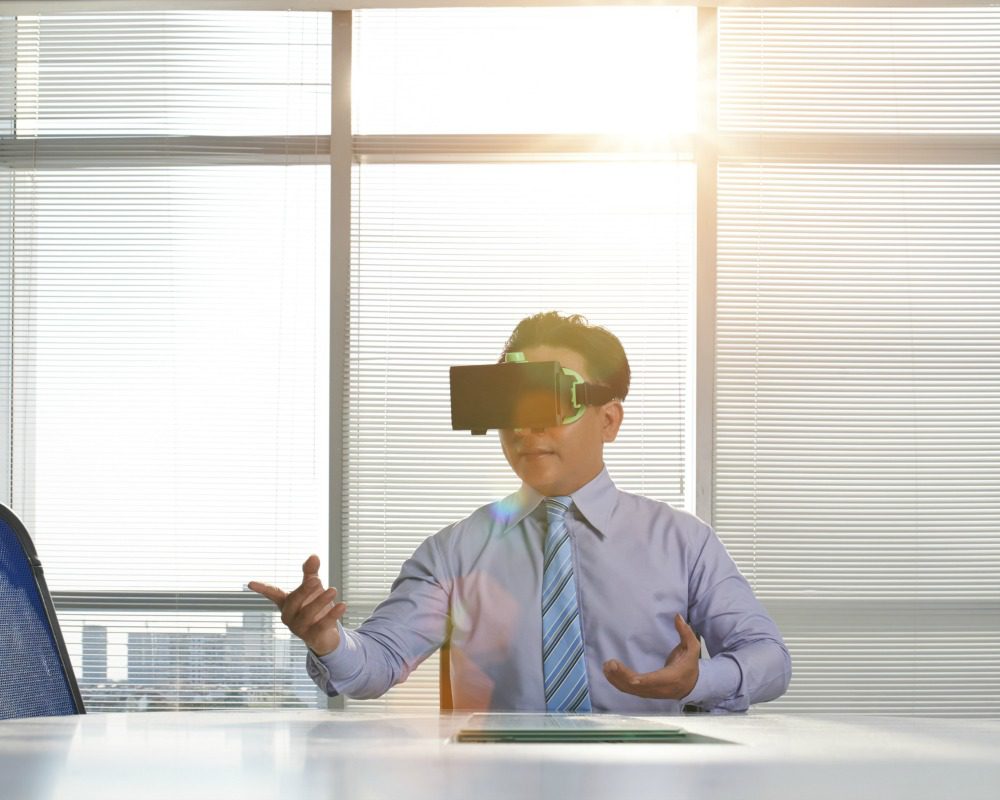
Some situations call for virtual or augmented realities as a learning tool.
by Michael J. Noble
March 18, 2016
When learning and development professionals look at 2016 trend lists for inspiration, they’ll find technologies such as virtual reality, augmented reality, and 3-D simulations on the list. These technologies are trending because they’re easier to use. In this case, easier means less expensive and available on more devices with greater ease of implementation.
Oculus Rift is perhaps the most commercially exciting, with Google Cardboard being the most extreme in terms of low cost and ease of implementation. However, the specific utility of these applications for instructional design and performance support often goes unstated — as though it’s obvious why someone would recreate their product in 3-D, and grab a virtual reality headset.
In the third edition of “Crossing the Chasm,” Geoffrey Moore identifies a gap between early adopters of these technologies and the early majority. The earlier adopters are visionaries and enthusiasts, while people in the early majority are pragmatists. For example, in 3-D environments presented though virtual or augmented reality, the early majority is starting to challenge the enthusiasts, asking questions like, “Why do I need this technology? Wouldn’t I just shoot video or design hands-on experiences? What types of learning needs can be met with this technology that wouldn’t be met through some other simpler or hassle-free approach?”
For these technologies to succeed in the world of learning performance, the pragmatists in the early majority need to see the business case for change. It isn’t enough that some learners respond well to the new and different because such an approach would be short-lived and would only work with a portion of the audience. The most practical application for these technologies isn’t a new or emerging learner need; it’s one that has always been with us. It’s also a need that has resisted a lot of previous digital learning attempts — the need to simulate equipment in the work environment.
Most of the specialized equipment used today is taught using a hands-on, apprenticeship model. One of the big questions with new technology is whether virtual reality can improve on a real, live learning experience. But there are a number of situations where a virtual or augmented experience may be better for learning. The following 10 considerations can help companies identify situations where they may have the strongest case to update their learning approach:
1. Will the learner’s error on the job result in personal injury and/or equipment damage? If the equipment is highly dangerous, or if the equipment is fragile or expensive, virtual or augmented reality can provide safe practice.
2. How available is the equipment for structured and informal learning? Does the size or geographic location limit feasibility of live training? Virtual and augmented reality also can provide valuable preparation — even if there will be additional hands-on experience once the equipment becomes available.
3. Will learner control of simulation duration, sequence, and/or pacing be valuable? Often, the ability to slow down or accelerate a physical operation can lead to detailed component knowledge or a higher level understanding of workflow.
4. Does the simulation need to support flexible delivery schedules or geographically dispersed team members? There may be logistical challenges to giving all learners the complete, hands-on experience. Virtual and augmented reality can provide scalability.
5. How will the simulation support or adapt to different levels of mastery? The ability to create learner progress levels may not be available on the real-world piece of equipment, even when levelling up is valuable from a learning perspective. Virtual and augmented reality can allow the timing of progressively complex tasks.
6. Are multiple pieces of equipment or processes interacting?Often, multiple pieces of equipment are used simultaneously. Virtual and augmented reality can isolate operations for one piece of equipment, and then integrate other pieces of equipment as learners achieve mastery.
7. What type of behavior should be modeled with respect to the equipment or its operation? Digital learning handles cognitive tasks and critical thinking behaviors very well. Virtual and augmented reality open the door to modeling and measuring other types of physical behaviors not possible or not very accurate in a traditional, desktop simulation.
8. What types of consequences need to be demonstrated? Certain consequences may not be desirable in the real world, as they are worst-case scenarios. But they could still provide valuable learning, and be done safely via virtual and augmented reality.
9. Does the simulation need to support testing or behavioral certification? A quality hands-on experience is contingent on the instructor or mentor’s expertise and methodology. This can be an unreliable and highly subjective measure of performance. Virtual and augmented reality can provide structure and enforce consistent standards.
10. How does the simulation complement other learning modalities? Because the simulation can be more easily integrated with other classroom or digital training, it can bridge the gap between learning the equipment and learning other related business rules or processes. The simulation also can be more readily integrated with performance support tools.
Even if the objective isn’t to implement virtual or augmented reality anytime soon, knowing the possible applications and use cases can help learning leaders evaluate their current solutions and identify opportunities.
Michael Noble is chief learning officer for Allen Communication. Comment below, or email editor@CLOmedia.com.



